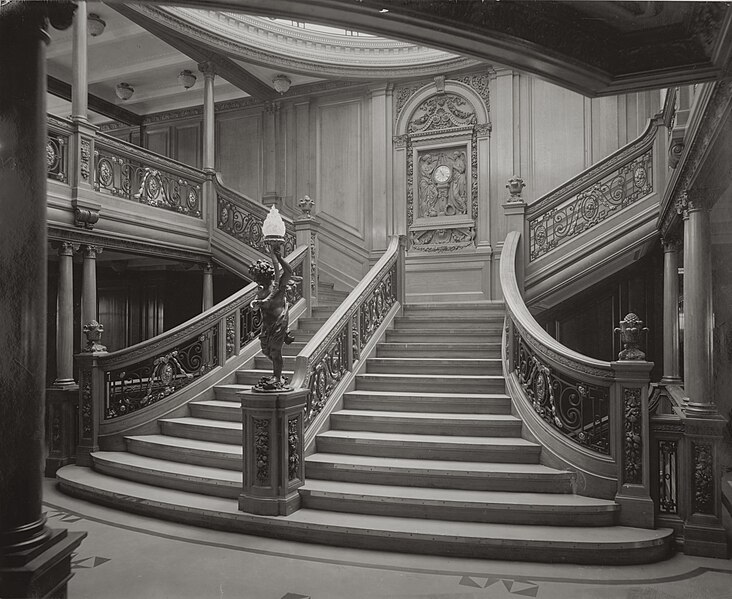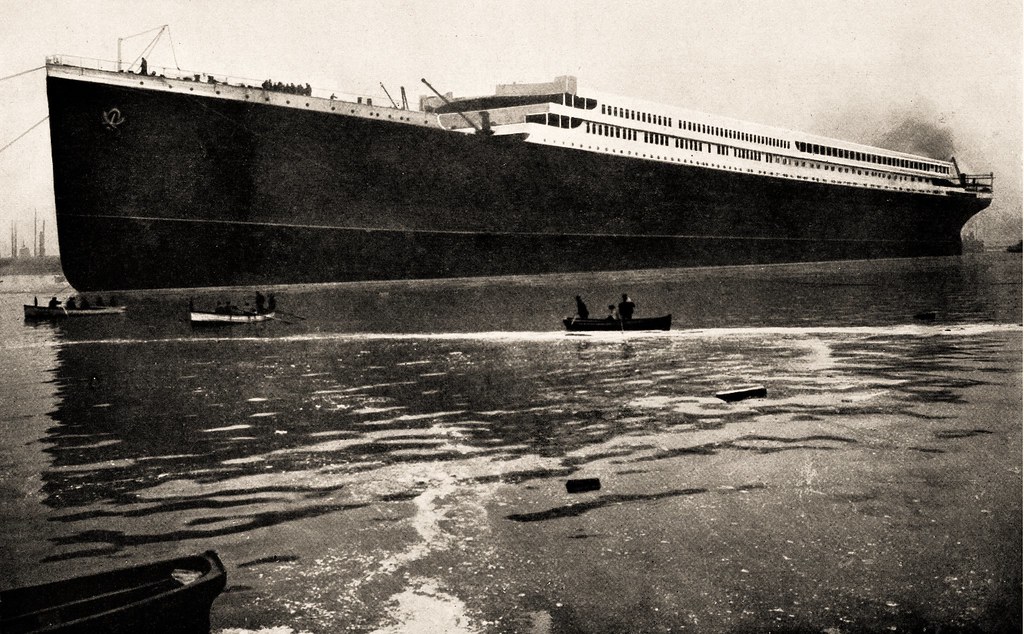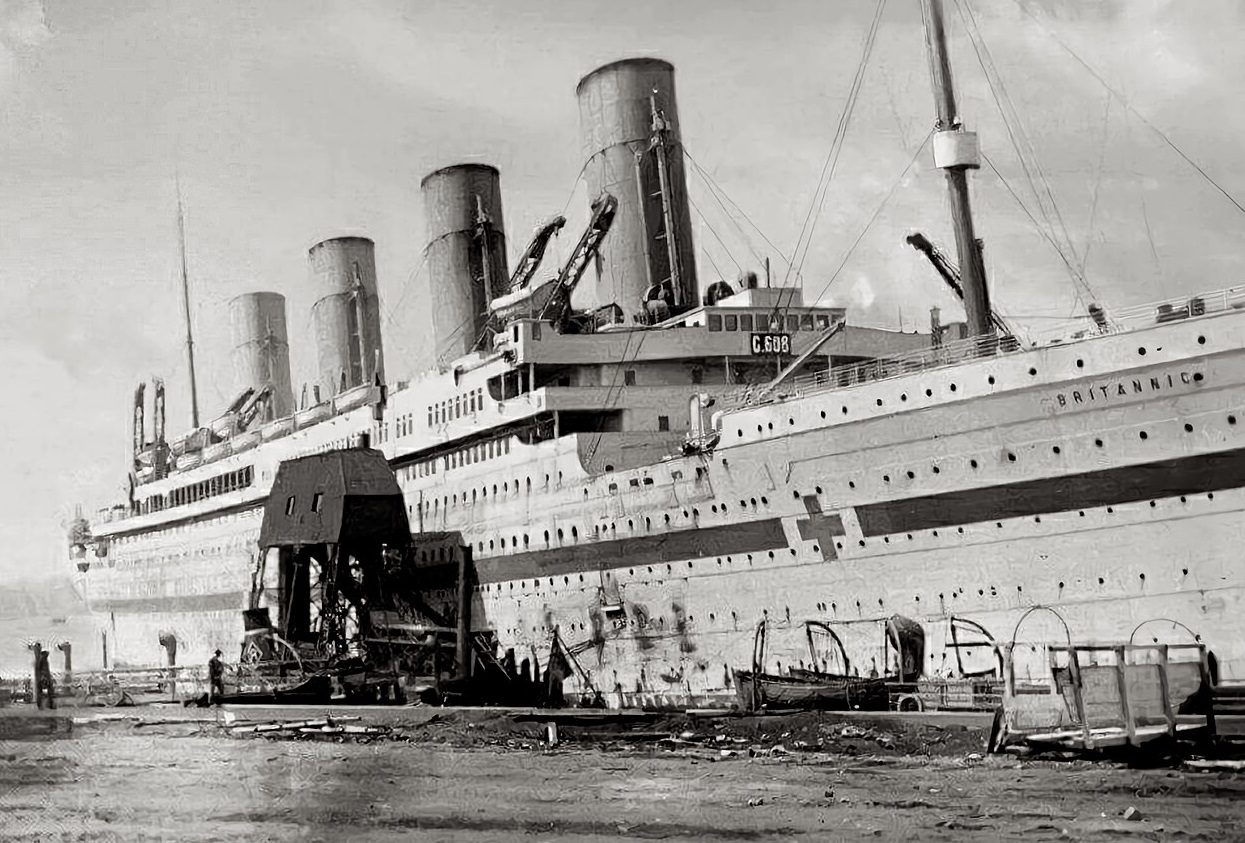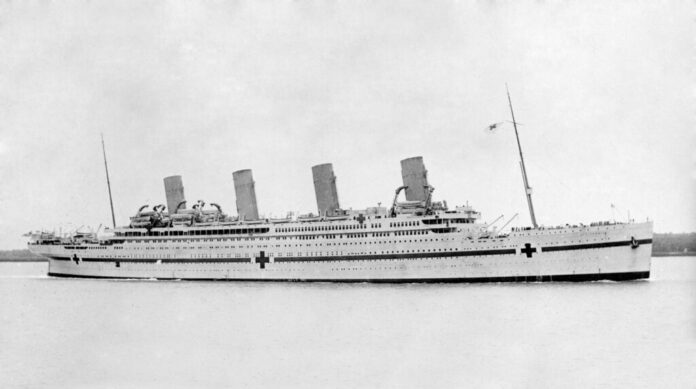On the coast of Greece, near the island of Kea, beneath the shimmering blue waters of the Mediterranean, there lies a wreck of a once graceful ship that has remained there since November 21st, 1916. Once meant to be the grandest ship ever to sail on the Atlantic, she never got to live the live the life that was intended, instead being fitted to serve in the First World War as a hospital ship, and then meeting a tragic end. This is the story of the H.M.H.S “Britannic,” the sister of the Titanic.

The Olympic-Class
H.M.H.S Britannic, like her more famous sister Titanic, was apart of the ‘Olympic-‘class trio of ocean liners, built by Harland & Wolff Shipyards, and owned by the White Star Line. The Olympic-class had first been dreamt of by White Star Line chairman J. Bruce Ismay, and Harland & Wolff chairman William Pirrie in 1907, at a dinner where they discussed building a new class of ship to rival the White Star Line’s rival company, the Cunard Line. Cunard Line at the time was one of the largest shipping companies in the world, and had recently unveiled the two largest, fastest, and most luxurious ships in the world, the R.M.S ‘Lusitania’ & R.M.S ‘Mauretania.’ To rival these two magnificent vessels, the White Star Line would need to construct their own class of vessels that would be larger and more luxurious than Cunard Line’s, thus leading to the Olympic-class.
At first, the Olympic-class would consist of two ships, the first to be named “Olympic,” and the second to be named “Titanic.” If the ships proved to be successful, then a third one would be constructed, that third ship would later become the Britannic. The reason for three ships specifically, was not only to outclass Cunard Line, but also to create a so-called “Express trio.” With an Express Trio, a company could have one ship sailing across the Atlantic to America, one sailing to Europe, and one sailing in either direction at any given time. Along with this, since the three ships would all enter service 1-2 years apart from each other, it meant the design could gradually be improved upon with each ship, as we will see later.
In 1911, the first of the three ships, the R.M.S Olympic, would set sail on her maiden voyage from Southampton to New York City. At 45,000 tons, the Olympic was the largest ship in the world, and quickly rose to become the most popular ship in the world, becoming the favorite of American millionaires. With such great success, the White Star Line confirmed a third ship would be built, and in November of 1911, the R.M.S Britannic would begin construction, intended to be the third and final of her sisters.
The next year, in 1912, her larger sister Titanic would enter service. Titanic was even larger than the Olympic, at 46,000 tons, and even more luxurious as she contained cabins with their own private verandahs and a Parisian-style cafe, features no other ship in the world had. On April 10th, she proudly departed Southampton on her maiden voyage, with her passengers expecting a triumphant arrival in New York City…

Sadly, as all know, Titanic would never arrive in New York City, as on April 14th, 1912, she struck an iceberg at 11:40 PM, sinking in a mere two hours and fourty minutes at 2:20 AM of April 15th. About 1,500 tragically lost their lives when Titanic sank, including the White Star Line’s commodore, E.J Smith, and the designer of Titanic, Thomas Andrews. Along with this, White Star Line chairman J. Bruce Ismay would be ridiculed by American journalist William Randolph Hearst for surviving the disaster, and over-ridden with guilt, he resigned from the White Star Line.
Changes to Britannic
After the loss of the Titanic, the maritime world fundamentally changed. Before the Titanic had sank, ships did not carry enough lifeboats for everyone on board. For example, the Titanic only had 24 lifeboats, which could only seat half of those on board. Her rival Lusitania, was no better, with only 20 lifeboats, less than half her capacity. After Titanic sank, however, the British Board of Trade changed their regulations, stating that all ships had to have enough lifeboats for all on board. With this new law, the White Star Line decided to try a radical experiment.
To lower a lifeboat, a mechanism called a ‘davit’ is used. At the time, the two main types of davits were the ‘Radial’ Davit and the ‘Wellin’ davit. The radial davit, would rotate outwards over the side of the ship. Meanwhile, the Wellin davit would act like a crane and lift the lifeboat, then swinging it over the side of the ship.

However, rather than go with a radial or wellin davit to lower lifeboats, White Star Line instead decided to make a new kind of davit. This davit, would be called the ‘Gantry Davit.’ The gantry davit, was designed to be about the size of a three story house, and unlike the wellins and radials which needed to be operated by hand, the gantry davit was fully electric and automatic. While wellin and radial davits could take as long as fifteen minutes to lower, a gantry davit could lower in mere seconds.
New davits were not the only change made to Britannic. One of the main reasons why Titanic had sunk was due to the fact that her watertight bulkheads did not go high enough, which meant water could spill over decks, and flood the ship. Britannic, would fix this problem by having higher watertight bulkheads, and a new double hull, making it impossible for icebergs to sink her. With this, Britannic was beyond doubt, the safest ship afloat.
Other changes would be made to Britannic, such as with her interior. Most notably, in her grand staircase. The grand staircase, is probably the most iconic feature of any ship in history, with it easily being associated with Titanic and other ocean liners.

The grand staircase was the epitome of luxury at sea, yet with Britannic, the White Star Line wished to improve upon the design. This would be done by adding a massive pipe organ forward of the staircase. The pipe organ was built in Germany, and due to World War I, it would never be installed on the Britannic. Luckily, this means that the organ still survives today, and is currently in a museum in Switzerland, where it still sings to this day.

Other changes to the Britannic, would include a new gymnasium for second-class passengers. While Olympic & Titanic both had gymnasiums, they had only been for first-class, now on Britannic, second-class could also enjoy their own gymnasium. Another change, would be a third-class promenade. On ships, a promenade was an outdoor walking space covered by a roof to protect passengers from the elements, with strolling them being a popular activity for passengers. However, usually only first-class and second-class passengers had access to such an amenity. On Britannic however, even third-class would enjoy this luxury.
A feature once rarely found on ships at the time, was a swimming pool. The first ship to have a swimming pool, was the R.M.S ‘Adriatic’, and the trend of having a swimming pool on ships quickly caught on, with both Olympic & Titanic receiving them. Unfortunately however, their swimming pools, while popular, were described as being “barebones”, with there being no decor at all. Britannic however, fixed this by having her pool lined with green marble, and decorated as if it were a Roman bath.

With virtually every amenity a passenger could dream of, Britannic would certainly be a palace at sea, and although she would not be the largest ship in the world (Germany’s S.S. ‘Vaterland’ held that title after Titanic), she would still be the largest ship ever built by Britain. Sadly however, an unexpected turn of events would befall her…
World War I
In February of 1914, Britannic would be launched to a crowd of over a hundred thousand in Belfast, gracefully slipping into the waves. Her launch would even be recorded, and the footage survives to this day, along with footage of Olympic’s launch. Sadly, footage of Titanic’s launch has been lost. After the launch of Britannic, she would begin her fitting out process, which is when a ship receives its wiring, passenger amenities, and other aspects. It would be expected that Britannic would embark on her maiden voyage sometime in mid-1915.

Unfortunately, this was not to be. In mid-1914, tensions in Europe would light a spark that would grow into the fire of World War I. With the Royal Navy in need of ships, many civilian ocean liners would be requisitioned for war service. This included the Olympic, and her rivals, Mauretania & Aquitania. Olympic, would become a troop transport and would begin to transport soldiers to the Mediterranean, where they would fight in the Dardanelles & Gallipoli Campaign. The Dardanelles Campaign however, along with the disastrous Gallipoli Campaign, would only cause high losses for Britain, meaning hospital ships would be needed to tend to wounded soldiers and transport them back to Britain. Britannic, which was still under construction, would be selected to serve as a hospital ship, with the prefix ‘HMHS’, or ‘His Majesty’s Hospital Ship’. Yet her life as a hospital ship, and how she saved countless lives, and finally lost her own, is a story for another time…







